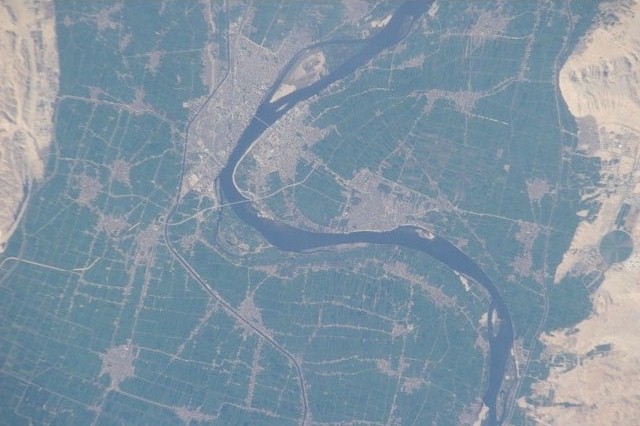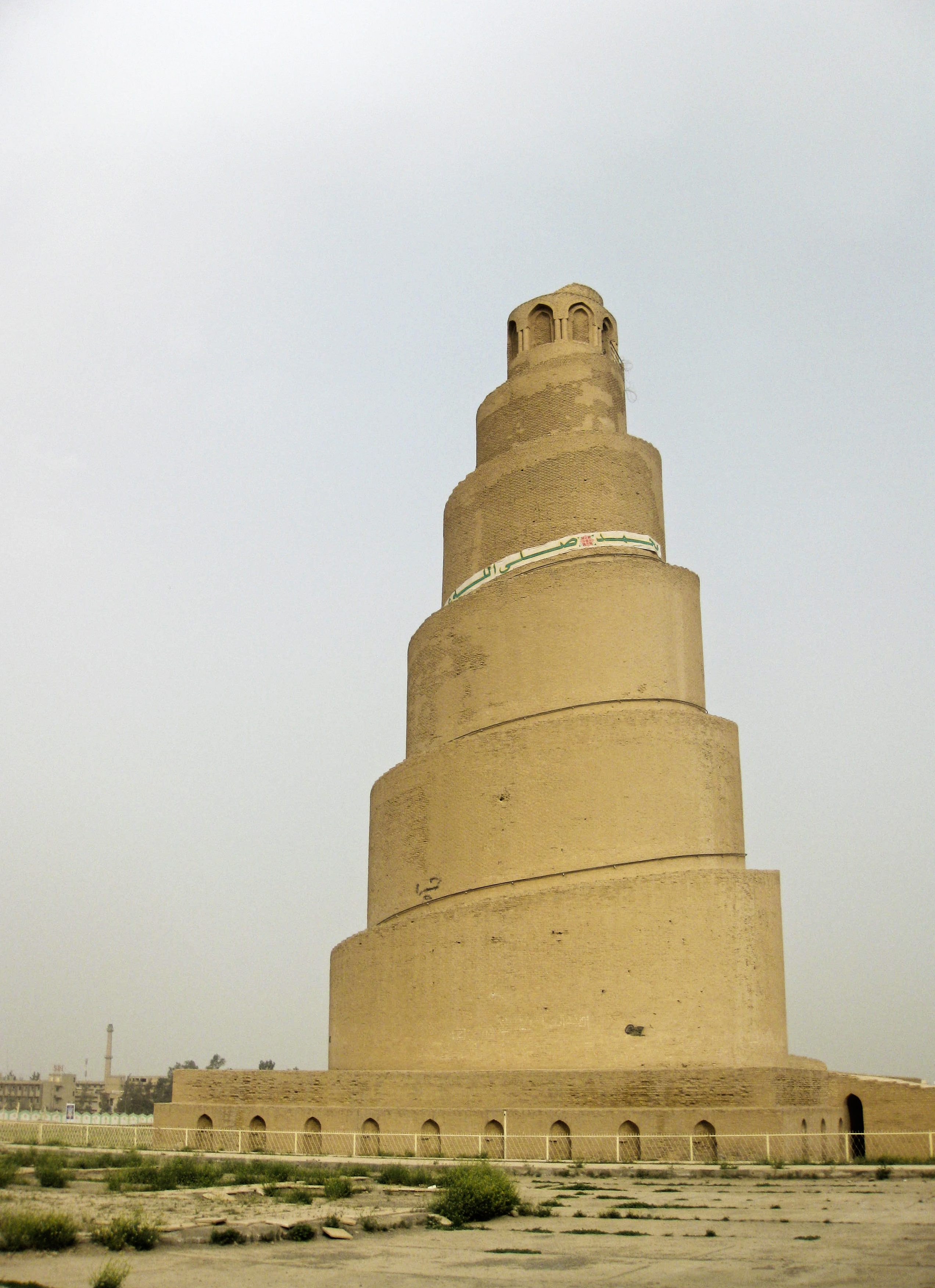|
Sohag By NASA
Sohag (, , ), also spelled as Suhag or Suhaj, is a city on the west bank of the Nile in Egypt. It has been the capital of Sohag Governorate since 1960, before which the capital was Girga and the name of the governorate was Girga Governorate. It also included Esna Governorate (nowadays Qena Governorate). History The modern city developed from the village of ''Suhay'' () (or ''Sumay''), the name of which eventually transformed into Suhaj, and is located on the site of several ancient settlements, the largest of which is ''Bompae'' (; or ). The others include ''Tmupaie'' (, ), ''Bay'' (, possibly an Arabisation of the aforementioned "Paha") and ''Sawaqi'' (). Geography Sohag lies on a fertile agricultural plain on the western bank of the Nile, approximately southwest of Akhmim. The city includes two islands; Karaman-ez-Zahur Island is larger and uninhabited, and ez-Zahur Island (جزيرة الزهور, Ǧazīrat az-Zuhur, "Flower Island") has some homes. Economy The cit ... [...More Info...] [...Related Items...] OR: [Wikipedia] [Google] [Baidu] |
List Of Cities And Towns In Egypt
0-9 * 10th of Ramadan * 15th of May (city), 15th of May * 6th of October (city), 6th of October A * Abu El Matamir * Abu Hummus * Abu Tesht * Abu Tig * Akhmim * Al Khankah * Alexandria * Arish * Ashmoun * Aswan * Awsim * Ain Sokhna B * Badr, Egypt, Badr * Baltim * Banha * Basyoun * Biyala * Belqas * Beni Mazar * Beni Suef * Beni Ebeid * Biba, Egypt, Biba * Bilbeis * Birket El Sab * Borg El Arab * Borg El Burullus * Bush, Egypt, Bush C * Cairo D * Dahab * Dairut * Damanhur * Damietta * Dar El Salam * Daraw * Deir Mawas * Dekernes * Dendera * Desouk * Diarb Negm * Dishna, Egypt, Dishna E * Edfu * Edku * El Alamein * El Ayyat * El Badari, Egypt, El Badari * El Badrashein * El Bagour * El Balyana * El Basaliya * El Bayadiya * El Dabaa * El Delengat * El Fashn * El Gamaliya * El Ghanayem * El Hamool * El Hamam * El Hawamdeya * El Husseiniya * El Idwa * El Kanayat * El Mahalla El Kubra * El Mahmoudiyah * Ptolemais Hermiou, El Mansha * El Manzala * El Mara ... [...More Info...] [...Related Items...] OR: [Wikipedia] [Google] [Baidu] |
Minaret
A minaret is a type of tower typically built into or adjacent to mosques. Minarets are generally used to project the Muslim call to prayer (''adhan'') from a muezzin, but they also served as landmarks and symbols of Islam's presence. They can have a variety of forms, from thick, squat towers to soaring, pencil-thin spires. Etymology Two Arabic words are used to denote the minaret tower: ''manāra'' and ''manār''. The English word "minaret" originates from the former, via the Turkish language, Turkish version (). The Arabic word ''manāra'' (plural: ''manārāt'') originally meant a "lamp stand", a cognate of Hebrew language, Hebrew ''Temple menorah, menorah''. It is assumed to be a derivation of an older Linguistic reconstruction, reconstructed form, ''manwara''. The other word, ''manār'' (plural: ''manā'ir'' or ''manāyir''), means "a place of light". Both words derive from the Arabic root ''n-w-r'', which has a meaning related to "light". Both words also had other meani ... [...More Info...] [...Related Items...] OR: [Wikipedia] [Google] [Baidu] |
Al-Ashraf Qansuh Al-Ghawri
Al-Ashraf Qansuh al-Ghuri () or Qansuh II al-Ghawri (c. 1441/1446 – 24 August 1516) was the second-to-last of the Mamluk Sultans. One of the last and most powerful of the Burji dynasty, he reigned from 1501 to 1516. Early life Qansuh, born between 1441 and 1446, was bought by Qaitbay, and educated at the al-Ghuri military school in Cairo, from which he gained his nickname "al-Ghuri".Behrens-Abouseif, Doris. "Cairo of the Mamluks". Cairo:AUC Press, 2008. p 295 Consequently, he held several official positions in Upper Egypt, Aleppo, Tarsus and Malatya. Later on, a revolt against Tuman bay by the conspiring emirs, led to the appointment of Qansuh as Sultan against his will, because he feared to be deposed by execution like his predecessors. Consolidation of power The reign began as usual with the removal of all Tuman bay's adherents. As dangerous to the throne, they were laid hold of, imprisoned or exiled and their property escheated; while the opposite party were restored ... [...More Info...] [...Related Items...] OR: [Wikipedia] [Google] [Baidu] |
Mamluk
Mamluk or Mamaluk (; (singular), , ''mamālīk'' (plural); translated as "one who is owned", meaning "slave") were non-Arab, ethnically diverse (mostly Turkic, Caucasian, Eastern and Southeastern European) enslaved mercenaries, slave-soldiers, and freed slaves who were assigned high-ranking military and administrative duties, serving the ruling Arab and Ottoman dynasties in the Muslim world. The most enduring Mamluk realm was the knightly military class in medieval Egypt, which developed from the ranks of slave-soldiers. Originally the Mamluks were slaves of Turkic origins from the Eurasian Steppe, but the institution of military slavery spread to include Circassians, Abkhazians, Georgians, Armenians, Russians, and Hungarians, as well as peoples from the Balkans such as Albanians, Greeks, and South Slavs (''see'' Saqaliba). They also recruited from the Egyptians. The "Mamluk/Ghulam Phenomenon", as David Ayalon dubbed the creation of the specific warrior class, was ... [...More Info...] [...Related Items...] OR: [Wikipedia] [Google] [Baidu] |
Qur'an
The Quran, also romanized Qur'an or Koran, is the central religious text of Islam, believed by Muslims to be a revelation directly from God ('' Allāh''). It is organized in 114 chapters (, ) which consist of individual verses ('). Besides its religious significance, it is widely regarded as the finest work in Arabic literature, and has significantly influenced the Arabic language. It is the object of a modern field of academic research known as Quranic studies. Muslims believe the Quran was orally revealed by God to the final Islamic prophet Muhammad through the angel Gabriel incrementally over a period of some 23 years, beginning on the Laylat al-Qadr, when Muhammad was 40, and concluding in 632, the year of his death. Muslims regard the Quran as Muhammad's most important miracle, a proof of his prophethood, and the culmination of a series of divine messages starting with those revealed to the first Islamic prophet Adam, including the holy books of the Torah, Psalms, ... [...More Info...] [...Related Items...] OR: [Wikipedia] [Google] [Baidu] |
Sura
A ''surah'' (; ; ) is an Arabic word meaning 'chapter' in the Quran. There are 114 ''suwar'' in the Quran, each divided into verses (). The ''suwar'' are of unequal length; the shortest ''surah'' ( al-Kawthar) has only three verses, while the longest ( al-Baqarah) contains 286 verses. Muhammad Mustafa Al-A'zami (2003), ''The History of The Qur'anic Text: From Revelation to Compilation: A Comparative Study with the Old and New Testaments'', p.70. UK Islamic Academy. . The Qur'an consists of one short introductory chapter (Q1), eight very long chapters, making up one-third of the Qur'an ( Q2‒ 9); 19 mid-length chapters, making up another one-third (Q10‒28); and 86 short and very short ones of the last one-third (Q29‒114). Of the 114 ''suwar'' in the Quran, 86 are classified as Meccan (), as according to Islamic tradition they were revealed before Muhammad's migration to Medina (''hijrah''), while 28 are Medinan (), as they were revealed after. This classification is onl ... [...More Info...] [...Related Items...] OR: [Wikipedia] [Google] [Baidu] |





